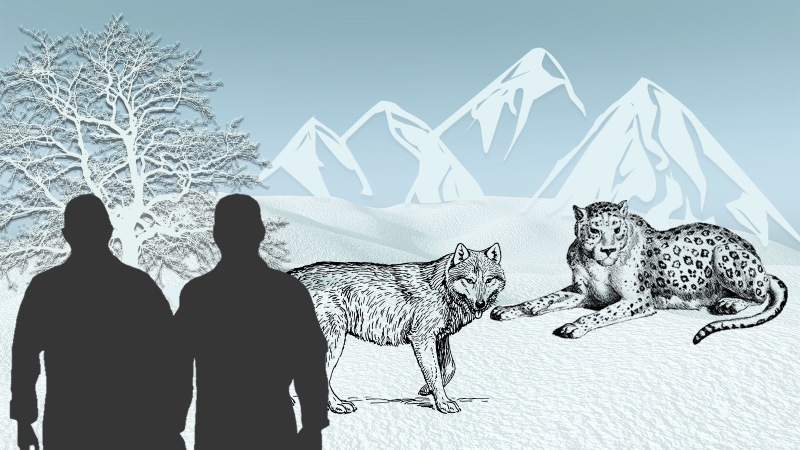
The conflict between humans and their surrounding wildlife has been an ongoing battle. Just a few weeks ago, an Indian bison that strayed into a housing complex in Pune died due to shock caused when many people gathered around to see it. According to a report by the Ministry of Environment, Forest and Climate Change conflict with tigers caused 275 human deaths between 2014 and 2019 in India. Various factors could be responsible for this conflict, from a person’s dependence on their livestock to habitat loss caused due to deforestation. In Ladakh’s agro pastoral communities, widespread livestock depredation by snow leopards and wolves results in their preventive killing. A recent study by researchers from the Nature Conservation Foundation, India, has analysed the various factors that play into human–wildlife conflict in Ladakh, India. The findings, published in the journal Animal Conservation, help in devising ways through which conservation agencies can reduce conflict in the region.
“The study attempts to delve into the supposed causal mechanisms that influence people's attitudes and behaviours,” says Dr Saloni Bhatia, the lead investigator of this study. “One could think of the five factors as 'indicators' to predict or even modify attitudes and behaviours.”. The researchers conducted a survey involving 172 participants from 17 villages in the Ladakh valley to understand these indicators.
The first factor, value orientation, takes into account the moral and ethical norms and preferences of the local people. The second factor, social interaction, is the nature of the relationship the person has with conservation agencies in the locality. The third factor considers the person’s dependence on agriculture and livestock. The fourth one, called risk perception, is how dangerous the person perceives the wild animal which, along with deep rooted biases and fears, could be based on its portrayal in the media. The final factor deals with the interactions with a wild animal, including its frequency and impact, the economic repercussions and the location (within the pastures, human habituations or the forest).
The results of the study showed that the main factors involved were the nature and frequency of the locals’ interactions with snow leopards and how much of a risk they perceived the animal to pose. It was found that the villagers perceived the snow leopard to be more dangerous than it was for a variety of reasons. Local superstitions like snow leopards being addicted to the blood of sheep and goats could be one. Snow leopards are responsible for livestock depredation and are thus often viewed as a pest or an irritant contributing to the negative nature of the interaction.
When it came to wolves, the two factors with the highest impact were ‘risk perception’ and ‘social interaction’. The wolf could be perceived to be dangerous because of reasons such as its greater visibility, their ability to form hunting packs and their tendency to howl. Due to state-sponsored bounties to exterminate wolves in the past and fewer conservation efforts towards wolves when compared to snow leopards, people’s social interactions with conservation agencies when it came to wolves tended to be rare.
Based on its results, the study suggests possible interventions to enhance human-wildlife coexistence. These include predator proofing of livestock housing and livestock insurance to reduce the frequency of negative interactions between humans and wildlife. Awareness of wildlife laws and stronger conservation efforts would create a deeper connection between the locals and conservation agencies in the area.
The study adds that alongside reducing negative impacts, conservation practitioners could target raising awareness about the animals as well as developing programmes that foster positive connections between humans and wildlife. "There is still plenty to discover, especially about the overlaps between culture and conservation and how local culture can be incorporated into conservation efforts such that they become more relatable and thus impactful. Additionally, I hope that this framework can be used to evaluate conservation interventions, especially how they perform when it comes to alleviating perceptions of risk or enhancing social trust,” signs off Dr Bhatia.
This article has been run past the researchers, whose work is covered, to ensure accuracy.
Editor's note: NCF stands for Nature Conservation Foundation and it was inadvertently mentioned as Nature Conservation Fund. The error is regretted.





